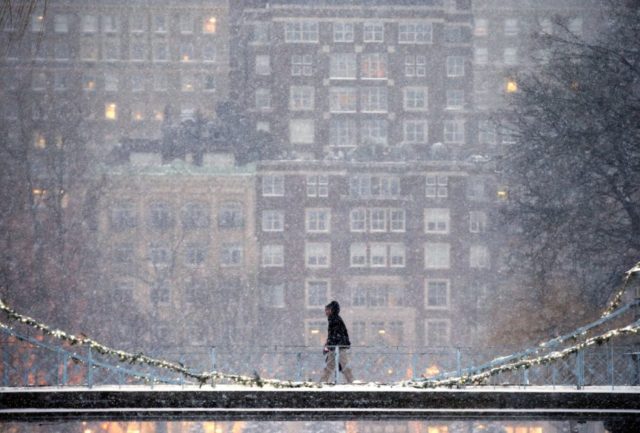Saturday Night Live’s Michael Che calling Boston “the most racist city I’ve ever been to” continues to elicit peculiar amens in Beantown as denizens rush to prove their enlightened status by attesting to the benightedness of their city.
“Boston is racist,” Renee Goodman informed earlier this week. The Boston Globe columnist insists that there exists “no debate on whether people of color, black people in particular, find Boston inhospitable.”
This Jedi Mind Trick of sorts cops to the racism of one’s community as a way of demonstrating the anti-racism of its members. Inherent within the explicit condemnation of the city’s racism is an implicit condemnation of a specific type of racism embraced by a specific type of Bostonian, ones living outside the Shawmut who probably do not read the Globe and definitely do not listen to the public radio station that employs Ms. Goodman.
The Proper Bostonians—people who speak like George Plimpton and dress like a Newbury Street mannequin—rioted in 1854 to save Anthony Burns from the Fugitive Slave Act. The Improper Bostonians voted for Dapper O’Neil, the curmudgeonly late-20th century pol who quipped on a candid camera, “I thought I was in Saigon, for Chrissakes,” after passing a crowd of Vietnamese at a Dorchester Day parade. The contrast between the patrician abolitionists and the blue-collar bigotry provides a class color to “Boston is racist” assertions. But reality shows that ugly instances of bigotry mark both groups in the rare majority-white urban enclave.
Racism comes primarily in two forms: upper-class snobbery and lower-class ignorance. Both kinds work to protect the social status of the practitioners. The former group loves minorities, but only from a distance. The latter group lives among minorities, but resorts to gutter language to distinguish their place on the social ladder from people of color—no matter how educated, accomplished, or classy the objects of their disdain—as a means assuring themselves that they do not occupy the lowest rung.
This latter form of racism, famously depicted in the infamous 1976 scene of a white man seemingly readying to impale a well-dressed black man with a flag pole during the unrest over court-ordered busing, concerns Mr. Che, Ms. Goodman, and others beating up Boston. But the city’s more deeply-rooted bigotry involves the brahmin class let off the hook by the current criticisms.
The very first non-Indian Bostonian felt the sting of this intolerance. William Blaxton invited the Puritans to settle on his land on present-day Boston Common after they found the water brackish in nearby Charlestown. They accepted his invitation, and then invited him to leave after discovering that his religious views differed from theirs.
The same Boston Common played as the site of the execution of four Quakers for the crime of practicing Quakerism. It’s a literal stone’s throw from where the anti-immigrant Know Nothing Party captured all but three of the seats in the state legislature in the 1850s and where Watch and Ward agents arrested H.L. Mencken for selling a copy of the American Mercury that contained a story about a prostitute.
Lillian Smith’s Strange Fruit, a story of interracial romance in the South, received the “banned in Boston” treatment in the 1940s. Despite Tom Yawkey holding out against integration longer than any other MLB owner all the way until 1959, the city ultimately named a street in honor of the Boston Red Sox honcho who brought the team zero championships in more than forty years at the helm. Murderer Charles Stuart fooled the entire city for several months in the late 1980s into believing that blacks killed his pregnant wife.
Like the individual Bostonians condemning their city as racist as a way of proving their innocence from the ugly sin, people generally deplore the racism external to them as a way of freeing themselves from confronting the racism within. Even SNL’s Michael Che Campbell, whose middle name honors a murderer who claimed that Africans “have maintained their racial purity thanks to their lack of an affinity with bathing,” overlooks the racism attached to the moniker his parents gave him.
On SNL and in the Athens of America, they see racism everywhere but the mirror. In Boston, where racism allegedly runs rampant, bigots, like Charlie of the MTA, exist under the surface but never show their faces above ground. In this way, citizens condemn their city while saying “but not me.” The fiercest denouncers of racism, a phenomenon of us and them, resemble the objects of their scorn. With both, it’s never us, it’s always them.

COMMENTS
Please let us know if you're having issues with commenting.